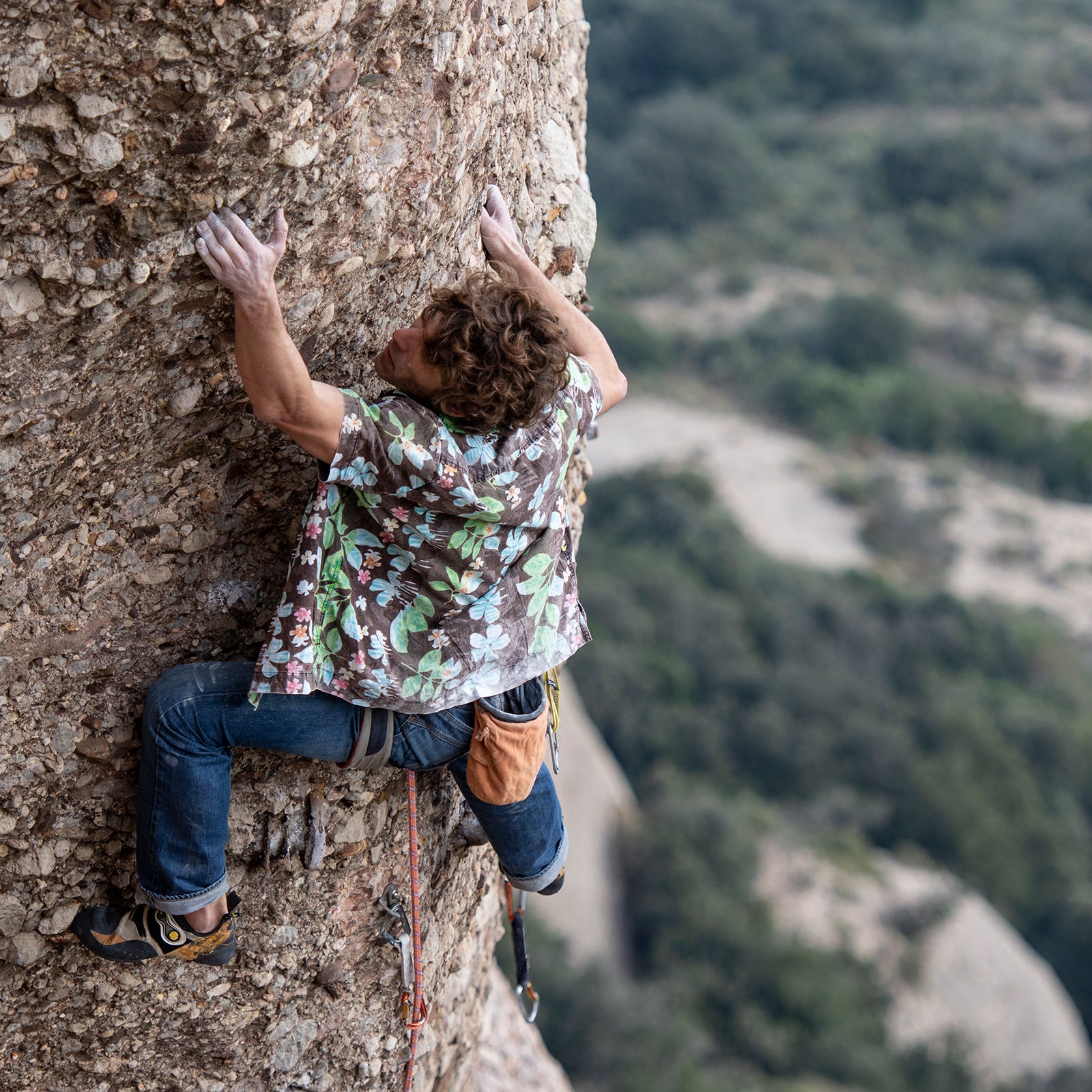A few inarguable facts about the Hawaiian shirt��before we get started: first, it’s impossible to take yourself too seriously while wearing one. Second, these wildly patterned shirts look good. Really good. And finally, looking good is fun.
Hawaiian shirts, traditionally known as��aloha shirts, are a nearly century-old tradition. While they were worn throughout the islands in the 1920s, a Chinese-Hawaiian entrepreneur named ��was the first to mass-produce them in the thirties. They became a favorite��tourist souvenir, especially among servicemen (one marketing campaign referred to them as ) Frank Sinatra wore one. They were Dwight D. Eisenhower’s weekend thing. And now they’re as ubiquitous in offices as they are at a trailhead.��
Typically made of rayon, silk, or cotton, they are generally lightweight, silky, and soft against the skin, which makes them a versatile layer for outdoorspeople. Delightful colors��and patterns of palm trees, flowers, and toucans are just the right amount of tacky. No other article of clothing quite captures this refined cheeky aesthetic.
But the spirit of the shirt is its greatest quality. If you’re��a participant in an outdoor activity, you likely know someone who takes that outdoor activity just a little too seriously. The ethos behind the Hawaiian shirt, whether you’re riding your mountain bike, skiing, or in a raft, says: We’re here to have a good time. I go at my own pace—island time.

Of course there’s a more utilitarian argument for the Hawaiian shirt as essential gear. Kimonos look and feel good, too, but they are less practical to wear while running a river. Ditto for sweater-vests. The Hawaiian shirt is light, breathable, and packs small. This means it performs well on the river, on the trail, and on spring ski slopes.
I stash a couple in my pack, no matter the adventure. My favorite was gifted to me by a janitor and Hawaiian-shirt connoisseur at my office. It’s baby blue and features thatch-roofed cabanas and sailboats. I bought another recently—black, with green palm trees and red parrots—at a thrift shop in Granada, Spain, where the Mediterranean climate makes the shirts extremely popular. I wore that one while biking the��Whole Enchilada��in Moab, Utah. It was 105 degrees. The shirt didn’t exactly wick, but it was as light and airy as anything else and, not gonna lie, I looked amazing. They fit perfectly over a base layer, a combo I wear under a midweight puffy while skiing. Why? The Hawaiian shirt is ideal �����è�� garb.��
My collection is modest��but slowly growing. You have to pick the right Hawaiian shirt for you—the perfect amount of billow, the ideal level of outlandishness. Because you should have an entire collection, it helps that Hawaiian shirts are generally inexpensive. A short-sleeved performance shirt can cost $75, but you can spend $20 at the local thrift store and buy four aloha shirts to��wear outdoors and to barbecues, parties, and your nephew’s bar mitzvah.
That’s the thing: these are party shirts. We are extremely fortunate to have the time and resources to run and bike and float outdoors. Why not wear something that reflects the good times we’re having?


